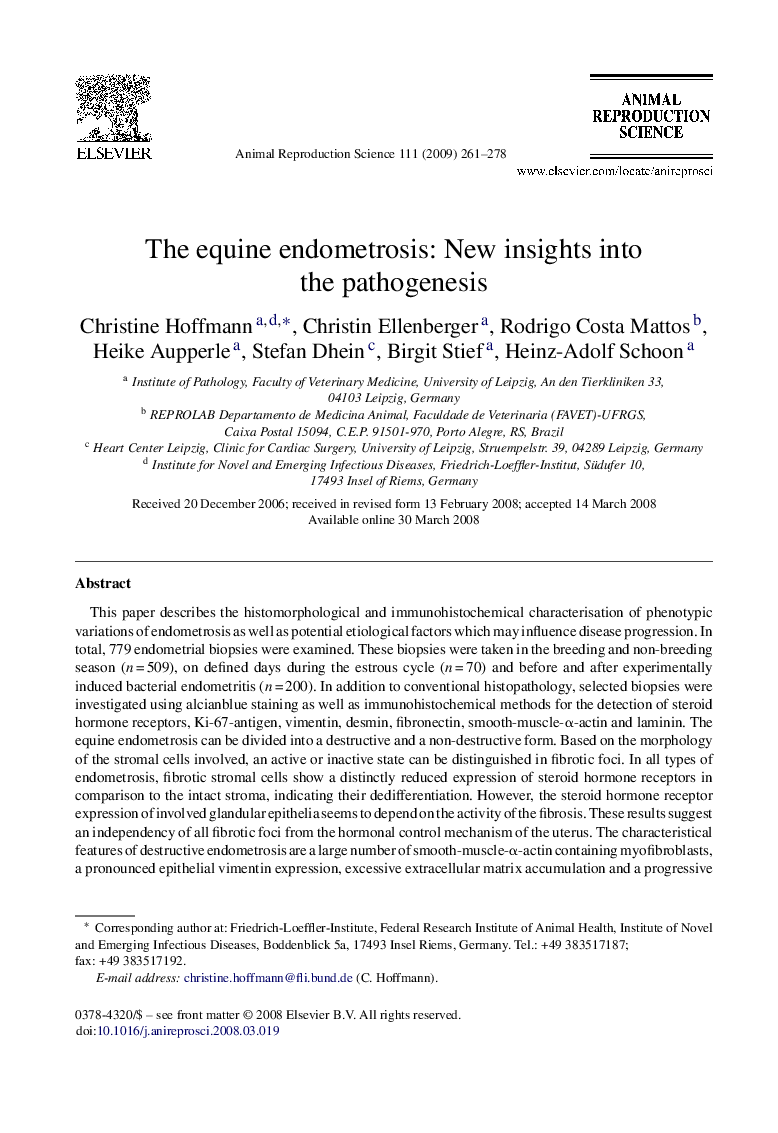| Article ID | Journal | Published Year | Pages | File Type |
|---|---|---|---|---|
| 2073951 | Animal Reproduction Science | 2009 | 18 Pages |
This paper describes the histomorphological and immunohistochemical characterisation of phenotypic variations of endometrosis as well as potential etiological factors which may influence disease progression. In total, 779 endometrial biopsies were examined. These biopsies were taken in the breeding and non-breeding season (n = 509), on defined days during the estrous cycle (n = 70) and before and after experimentally induced bacterial endometritis (n = 200). In addition to conventional histopathology, selected biopsies were investigated using alcianblue staining as well as immunohistochemical methods for the detection of steroid hormone receptors, Ki-67-antigen, vimentin, desmin, fibronectin, smooth-muscle-α-actin and laminin. The equine endometrosis can be divided into a destructive and a non-destructive form. Based on the morphology of the stromal cells involved, an active or inactive state can be distinguished in fibrotic foci. In all types of endometrosis, fibrotic stromal cells show a distinctly reduced expression of steroid hormone receptors in comparison to the intact stroma, indicating their dedifferentiation. However, the steroid hormone receptor expression of involved glandular epithelia seems to depend on the activity of the fibrosis. These results suggest an independency of all fibrotic foci from the hormonal control mechanism of the uterus. The characteristical features of destructive endometrosis are a large number of smooth-muscle-α-actin containing myofibroblasts, a pronounced epithelial vimentin expression, excessive extracellular matrix accumulation and a progressive alteration of the basal lamina. Furthermore, the frequently seen cystic glandular dilatation and mechanical destruction of the uterine glands may occur due to the contractibility of the myofibroblasts involved. As shown in this study, a simultaneous endometritis can cause a temporary activation of fibrotic stromal cells. However, cyclic and seasonal endocrine changes seem to have no effects on progression of the disease. It can be concluded that the various types of endometrosis represent different stages in the fibrotic process, possibly leading to the destruction of the glands and subsequently resulting in the development of a stromal fibrosis.
